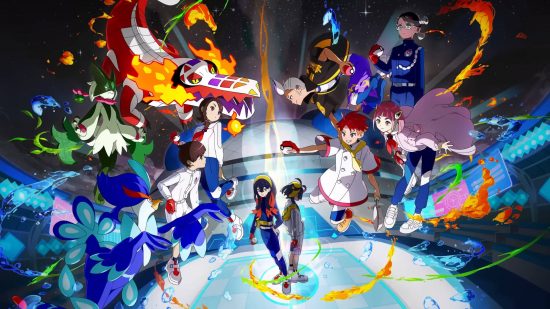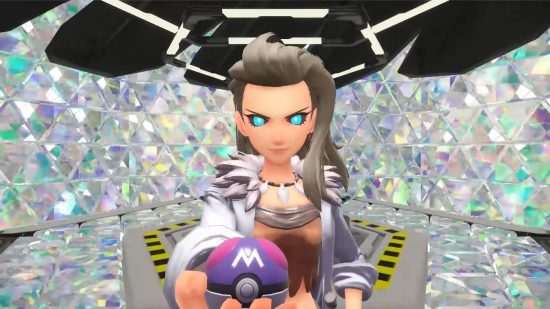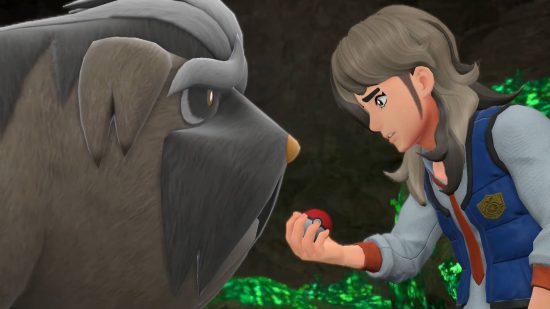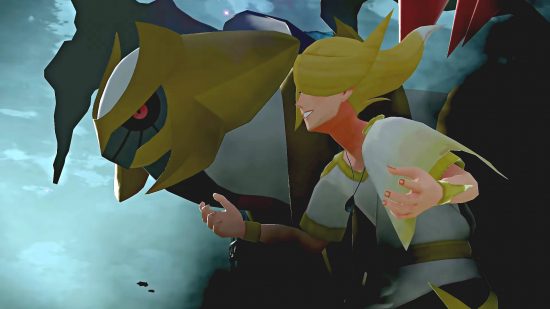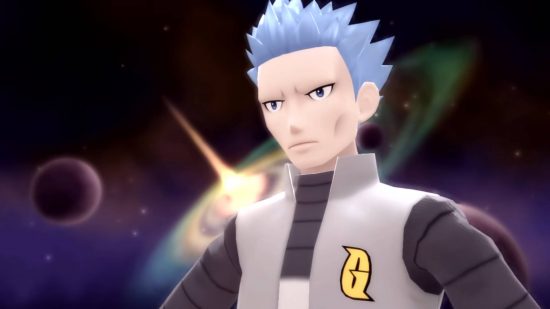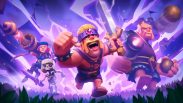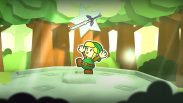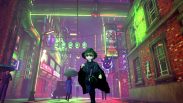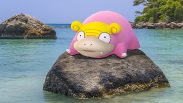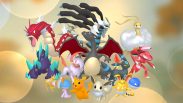We’re familiar with the three pillars of Pokémon games: they always have a whole bunch of new Pokémon to catch, there’s always an Elite Four, and there’s always some new gimmick. However, I would argue that there’s a fourth pillar, and it’s just as important. It serves as a way of delivering the plot and themes that make each generation stand out, breaking up the monotony of going from gym to gym.
Yes, for better or worse, the ‘evil’ teams are a crucial part of the theme for each game. However, in recent Pokémon generations, there just haven’t been any well-written bonafide villains with believable motives until Scarlet and Violet, and even then, it hasn’t pulled the trigger yet.
Before I go any further, I must make clear that this article spoils not just the ending of Pokémon Scarlet and Violet, but the main plots of every main-series Pokémon game to date. If you haven’t reached those points with any of them, now’s the time to binge, as they’re fantastic RPG games, especially if you’re constantly on the go.
With that said, we need to talk about Area Zero. Throughout Scarlet and Violet, much like Dynamaxing played a huge part in Pokémon Sword and Shield, we get glimpses of some kind of phenomenon surrounding Terastalization. Sure, it changes a Pokémon’s type, but it does so much more with one person discovering its true potential.
As the credits roll, I feel that the final chapter is nearly perfect. I like that despite everything that happens in the game’s concluding moments, there’s always a chance someone else could continue the professor’s research, giving us the potential for more Paradox beasts. In addition, some of that research details a previously undiscovered Pokémon that may play a massive part in any future DLC story.
I appreciate that, for once, the evil team are just a bunch of misunderstood outcasts trying to make their oppressed voices heard and not linked to the true baddie. I especially love that the professor’s villainous turn introduces internal conflict for Arven, a character we adventured with, who we got to know as a kind-hearted guy who just wants his doggo to be okay.
No, my only problem with the story in Pokémon Scarlet and Violet is that Arven’s parental figure is deceased and the professor we meet is an AI copy. I played Pokémon Violet, so the idea initially makes sense: Professor Turo goes into the future, learns how to make an AI clone of himself, and then sends them back to the present time to begin the introduction of future Pokémon to the timeline. Diabolical but logistically sound. What doesn’t make any sense is if I was playing Pokémon Scarlet, where Professor Sada travels back to the past. Nowhere in the notes you find does it say how this technology is made aside from a tenuous link to Terastalization.
Logical inconsistencies aside, there’s a glimmer of something breaking through. Even if Arven is doing okay on the surface, he’s going through the stages of grief. He’s only just discovered his parent died despite it occurring several years ago. As someone who suddenly lost a parent, I can’t begin to imagine how hard it is to ‘suddenly’ lose a parent and not know about it for several years.
The sheer emotional toll that could have on Arven might compel him to reopen the past or future. He could become desperate enough. In fact, the only thing keeping him grounded in reality is his beloved Mabosstiff. It would have to have another health scare for him to make such rash decisions. It’s because of these possibilities that I believe that, before the announcement of Scarlet and Violet’s DLC, we only have part of the story. It’s unfinished, and that’s why its ending left me cold.
Villains in Pokémon games are a mixed bag, and for me, the most memorable ones are the ones with motivations beyond total control. Team Rocket is a mafia-like group whose story spans two generations. But the second act is more compelling as Team Rocket’s goal is convincing its previous leader to return, desperately showing they still have what it takes with various nefarious PR stunts.
However, it’s far more effective when the bad guy’s objective dips into real-world issues. Both Team Aqua and Team Magma are fighting for different outcomes in a clear allegory concerning climate change. Ghetsis wasn’t above manipulating others with a genuine question about the ethics of owning creatures as pets and forcing them to fight, all as a facade for his goal to take over the region.
The lack of a truly believable purpose is what frustrates me about almost every game since Black and White. Team Flare’s goal is to remake the world because it’s ugly. Team Skull is just a stooge for the real villains in Sun and Moon, who just want to create a fake sanctuary for injured Pokémon, and this doesn’t even stick in Ultra Sun and Ultra Moon as they’re replaced by Necrozma as the villain. Team Yell is just a group of highly motivated and rebellious fans. Even Volo, despite being one of the better villains as he manipulates you the entire game, his actual driving force is similar to Cyrus – the villain from the fourth generation games.
This is why I reckon I know where things are going during The Hidden Treasure of Area Zero, specifically part two. It all ties back to a familiar face, perhaps one of the most misunderstood characters in all of Pokémon: Colress. Game Freak introduced him during Pokémon Black 2 and White 2, he’s the de facto second-in-command of Team Plasma until he decides that his experiment has run its course and leaves. His ideals are to try and draw the true strength out of Pokémon, and that’s a vital motivation here too.
Perhaps through meeting with Arven, while masquerading as a professor at Blueberry Academy, Colress promises him that he can bring back his family in exchange for the book. This leads Colress to discover exactly how Paradox Pokémon work and how they tie up with the newly revealed Terapagos, who is written about in the Scarlet/Violet book that Arven has. It’s my opinion that Colress will show his true colours and soon try to create the strongest Pokémon he can think of with the intention of bringing the world to his will.
If Pokémon Scarlet and Violet opt for chaptered stories to introduce new areas, a slew of new Paradox Pokémon, and the return of a morally ambiguous character, we could have the best story a main series Pokémon game’s ever told. It will have context, stakes, clear motivations, and above all else, a villain we can sympathise with beyond superficial goals. After all, if the Batman comics taught us anything, everyone loves a good villain origin story. Perhaps Pokémon Scarlet and Violet’s finale was a long-con set-up back in Pokémon Black 2 and White 2? If so, that would make far more sense than what we have right now – a professor being able to make a sentient AI because of some shiny crystals.
For more content like this, make sure you check out our Pokémon Scarlet and Violet mystery gift codes, Pokédex, and Pokémon Scarlet and Violet tera raid battle guides.
